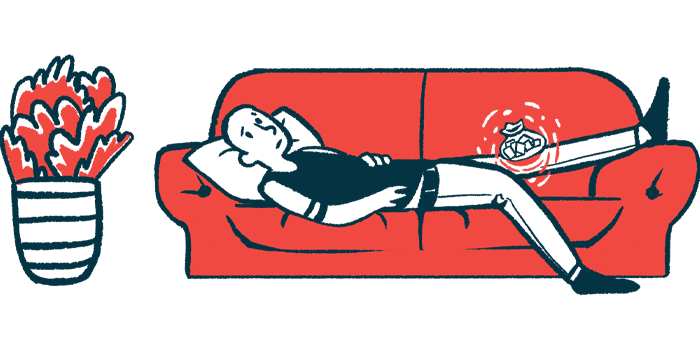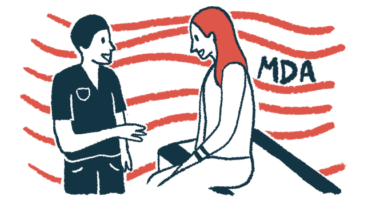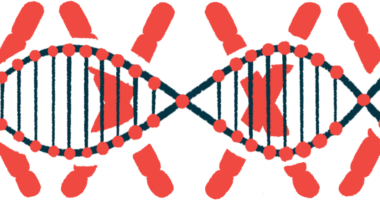Moderate pain reported by a third of muscular dystrophy patients
Findings show managing pain is a 'frequent component of MD care'

Nearly one-third of people with muscular dystrophy (MD) experience moderate pain, which varies by the type of their MD, a study with more than 1,200 participants suggests.
To manage their pain, about a fifth of patients used prescribed pain medications, mostly non-opioid therapies at first, then combined with opioids over time. Impaired mobility was the most significant factor associated with using prescription pain medication.
“These data highlight pain management as a frequent component of MD care,” the study’s researchers wrote. “Understanding modifiable factors associated with MD-related pain and effective interventions may help improve care.” The large-scale study, “Pain Experiences and Prescription Pain Medications Among People With Selected Muscular Dystrophies in the Muscular Dystrophy Surveillance, Tracking, and Research Network,” was published in Muscle & Nerve.
Pain is a common symptom for people with MD, a group of more than 30 genetic diseases marked by progressive muscle weakness and wasting. Managing it typically involves over-the-counter or prescription pain medications, along with physical therapy or other non-pharmacologic treatments.
Experiencing pain
To better understand pain and its medical management in MD, a team led by scientists at the University of Iowa collected pain and prescription data from the medical records of 1,282 people with different types of MD. The data were sourced from the U.S. Muscular Dystrophy Surveillance, Tracking, and Research Network (MD STARnet).
Most patients were diagnosed with myotonic dystrophy (36.4%) or Duchenne or Becker MD (31.4%). Others had facioscapulohumeral MD (13.3%), limb-girdle MD (12.2%), congenital MD (3.4%), distal myopathies (1.7%), and Emery-Dreifuss MD (1.6%).
Among those with at least one recorded pain score (from 0 to 10), about half (54%) reported any pain (a score greater than 0) and about a third (34%) reported moderate pain (a score of at least 5). The proportion of those reporting moderate pain varied by MD type, from congenital MD (13%) to limb-girdle MD (53%).
Pain occurred most frequently in the neck, chest, back, and lower extremities. Upper body pain was reported by about half of those with distal myopathies and facioscapulohumeral MD, while lower body pain was more frequent with Duchenne or Becker MD, limb-girdle MD, distal myopathies, and congenital MD.
Managing pain in MD
Across all MD types combined, most (78.2%) didn’t have prescription pain medications recorded. For those who did, opioids and anticonvulsants were the most frequent. The most common individual medications were tramadol, acetaminophen–hydrocodone, gabapentin, cyclobenzaprine, and meloxicam.
The most common first medication type was non-opioids only (57%), followed by opioids only (28.3%), and then both (14.7%). During a follow-up, the use of non-opioid and opioid combinations grew (33.7%), while opioids alone lessened (17.2%), and non-opioids continued to be the most common (49.1%). For those with at least five years of follow-up, nearly 90% were prescribed any pain or opioid medication for one or more years.
The researchers also looked for factors associated with prescription pain medications in the most common MD types. Pain medications were prescribed for up to 40% of MD patients 20 years and older, but for less than 15% among people younger than 20.
Those with limb-girdle MD or facioscapulohumeral MD with a family history of MD were more than twice as likely to have received pain medication than those without a family history.
This finding was “consistent with the predictions of familial pain models whereby people exposed to pain within the family are more likely to report pain” or “are more proactive in seeking management of their own pain,” the scientists wrote.
Men with facioscapulohumeral MD had higher odds of any pain medication than women, while men with limb-girdle MD had lower odds of using pain medication.
“We found that while prescriptions for pain medications differed between men and women for each MD type, there was not a consistent pattern,” the researchers wrote.
The use of a device to aid with walking more than tripled the odds of prescription pain medication use in limb-girdle MD or facioscapulohumeral MD, and nearly doubled the odds in myotonic dystrophy.
Compared to non-Hispanic whites with limb-girdle MD, those of other ethnicities, including non-Hispanic Black people, Hispanics, and all other ethnicities, were more than twice as likely to receive a pain medication prescription.
Similar patterns of associations were found for opioid medications, except for the relationship between sex and facioscapulohumeral MD.
“Our study highlights that the use of prescription medications for pain management is a component of MD clinical care and underscores the importance of establishing individual-focused guidance for managing pain among people with MD,” the researchers wrote.







